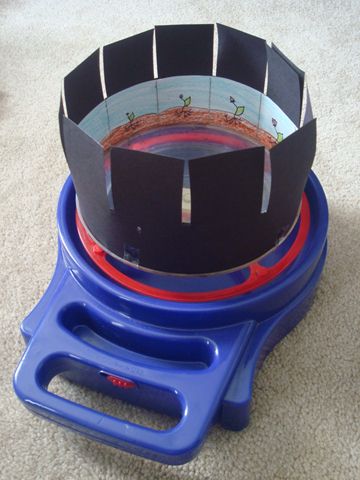As a child, I would be up with the sun watching cartoons every Saturday morning. Scooby-Doo, The Flinstones, Ducktales, Looney Tunes, Teenage Mutant Ninja Turtles, and the ThunderCats were among my favorites. I loved Walt Disney movies too. Today's generation of kids are growing up watching cartoons like I did, but may not recognize the artistry behind their beloved animated cartoons.
Animation is the rapid display of a sequence of images of 2-D or 3-D artwork or model positions to create an illusion of movement. Animators typically draw 12 frames/pictures for each second of animation. For 60 seconds of animation, the animator(s) draw 720 pictures! That is a lot of drawing.
Students in 3rd and 4th grade were introduced to the animation unit by creating thaumatropes, which were popular toys in Victorian times. Thaumatropes are 2 images that effectively create the illusion of movement. After successfully creating thaumatropes, students created Zoetropes, which were invented in 180 AD. For their Zoetrope, students drew 11 frames for their animations. Below are examples of the students' zoetropes that I scanned and animated on my computer. There are also links for tutorials on creating both types of
animations
DIY: Students can make a spinner for their animations at home with a small plastic take-out container lid, tape, and black construction paper. Enjoy!
Animation is the rapid display of a sequence of images of 2-D or 3-D artwork or model positions to create an illusion of movement. Animators typically draw 12 frames/pictures for each second of animation. For 60 seconds of animation, the animator(s) draw 720 pictures! That is a lot of drawing.
Students in 3rd and 4th grade were introduced to the animation unit by creating thaumatropes, which were popular toys in Victorian times. Thaumatropes are 2 images that effectively create the illusion of movement. After successfully creating thaumatropes, students created Zoetropes, which were invented in 180 AD. For their Zoetrope, students drew 11 frames for their animations. Below are examples of the students' zoetropes that I scanned and animated on my computer. There are also links for tutorials on creating both types of
animations


No comments:
Post a Comment